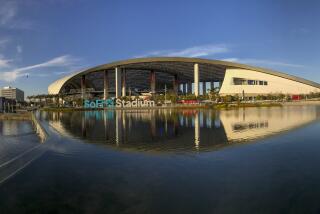Black for homes is trending, inside and out
A black home presents a singular dichotomy. Set against a sapphire sky and viridescent landscape, it can nearly buzz with bracing contrast. A black exterior also augments a home’s shape, as it smartly traces a structure’s mass and lines.
And yet, a black home can recede and even appear to vanish. For all its drama and power, black is forever mysterious — a color (if we must call it that) that, quite simply, eats light.
Resistance is futile, come to the dark side — for black is indeed trending, beyond its role as a timeless standard. Homeowners are gaining new confidence with its use, most notably and boldly on exteriors, testing black’s powers of sophistication, modernity, minimalism and seduction.
The proof is in the paint.
“From 2017 to our most current data, we saw a nearly 30% increase in the usage of blacks” for interior and exterior use, said Benjamin Moore color and design expert Hannah Yeo. “What was really interesting — in 2017, the No. 1 and No. 2 blacks were actually a really deep gray. But in the recent report, the No. 1 color in blacks was just pure black.”
In other words, homeowners aren’t fooling around. They’re going for it, also choosing such inky shades as “Midnight Oil,” which in 2017 didn’t even make Benjamin Moore’s top 25 black hues. This year, Yeo said, “it jumped to one of the top-selling blacks, and it wasn’t a color that we were actively promoting.”
“It speaks to how confident people are in using those really deep, true blacks,” she said.
Black homes have been cropping up in Venice and Silver Lake, areas considered to be more architecturally progressive, but they can also be found elsewhere in Los Angeles, according to designers and real estate agents.
Architectural designer Julie Hart and designer-developer Sue Parsons recently created three black-clad homes in Westchester, just south of Venice. The pair favor Benjamin Moore’s “Midnight Oil,” as well as the company’s sable-shaded “Black Beauty.”
“It’s been a risk — Westchester is a little more conservative,” Parsons said. “Everyone gets freaked out when I do dark houses, but once I’m done and neighbors see them, they say, ‘Ahh, I understand.’ They see that the homes actually blend into a neighborhood.”
The Hart and Parsons homes are traditionally styled, some of them like gable barns, and are occasionally clad in fiber cement siding done in a board-and-batten style. The homes open to monochromatic white interiors with oak flooring and black accents that include doors, hardware and steel railings.
The pair use a “solar reflective” paint additive that “cools the house by 10%,” said Parsons, because black absorbs both light and heat.
Homeowners Lilly Bright and Evan Cole experience no heat gain in their “black on black on black” five-bedroom Brentwood home, thanks to superb insulation, said Cole, founder and chief executive of HD Buttercup home furnishings. Created by DesignARC, the home replicates the Midcentury Modern shape of the lot’s original 1961 house, which was taken down to studs for the 2017 build.
Benjamin Moore’s “Graphite,” adjusted to a darker shade, was used on the home’s cedar siding.
“I love the fact that the house kind of disappears a bit, and people have said that when trying to find it,” said Bright, a writer, performer and founder of Arthouse Films and Curiously Bright Entertainment. “The neighbors are unanimously very pleased.”
A vibrant lawn wraps around three-quarters of the property, and Mexican feather grass, papyrus and the pendulous blooms of a yellow angel’s trumpet all add snaps of contrast.
Home shoppers are “pleasantly surprised at the restful nature” of black homes, Compass agent Stephanie Younger said, adding that the homes appeal to tech executives, young professionals and those with a “design-forward sense.”
In short, modern black homes seem to be soothing –– not spooky.
“There’s a bit of protective element around black –– it’s sort of like the protection of night where you can’t be perceived,” said Leatrice Eiseman, executive director of the Pantone Color Institute, whose 2019 Color of the Year is the decidedly more optimistic “Living Coral.”
She and other color experts note that black is trending inside homes, also: accent walls, doors, furniture, faucets, accessories and most notably in cabinetry, especially in kitchens.
Eiseman believes we’re now “revisiting the 1980s … the first time that black was used as a color in the kitchen, [for] elegant stoves and refrigerators,” she said. The shade evokes a Reagan-era elegance of black limousines “and people dressed in black, going to beautiful parties.”
Beyond black’s expensive look, the color offers a blank slate for other impressions — edgy and rebellious, minimalist and Zen-like, or seriously sexy.
“Black has always been a presence,” Eiseman said. “It’s the ultimate power color.”






